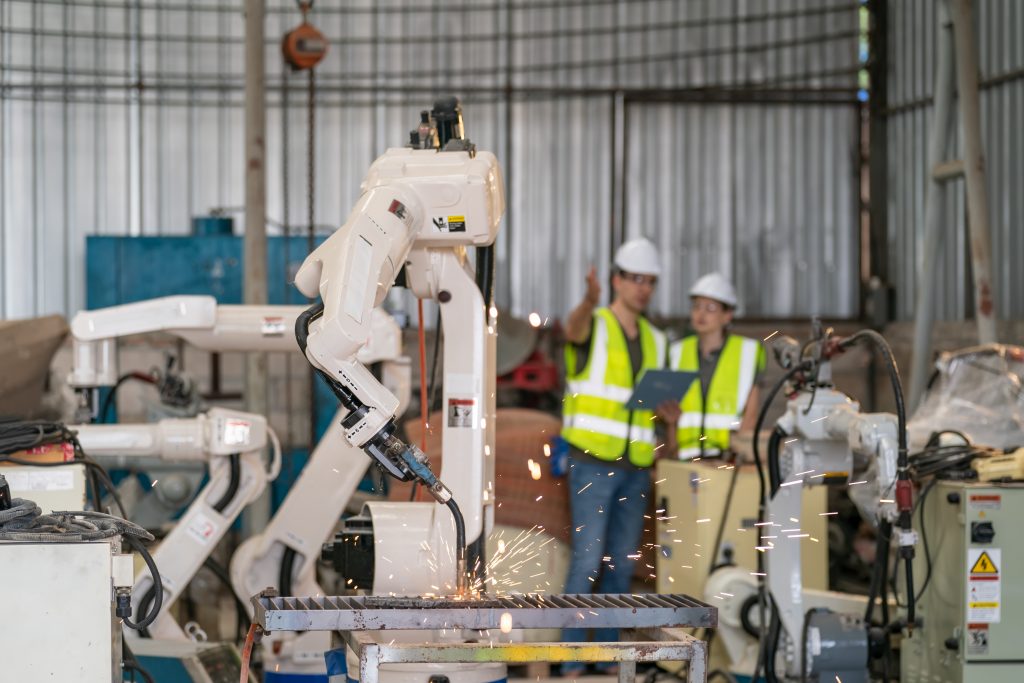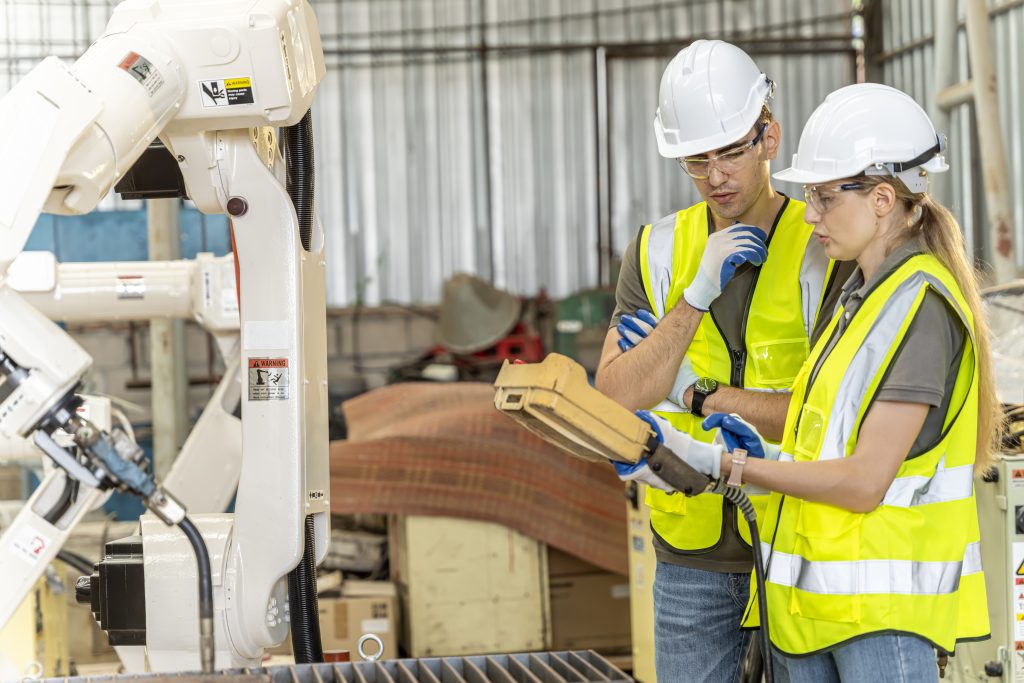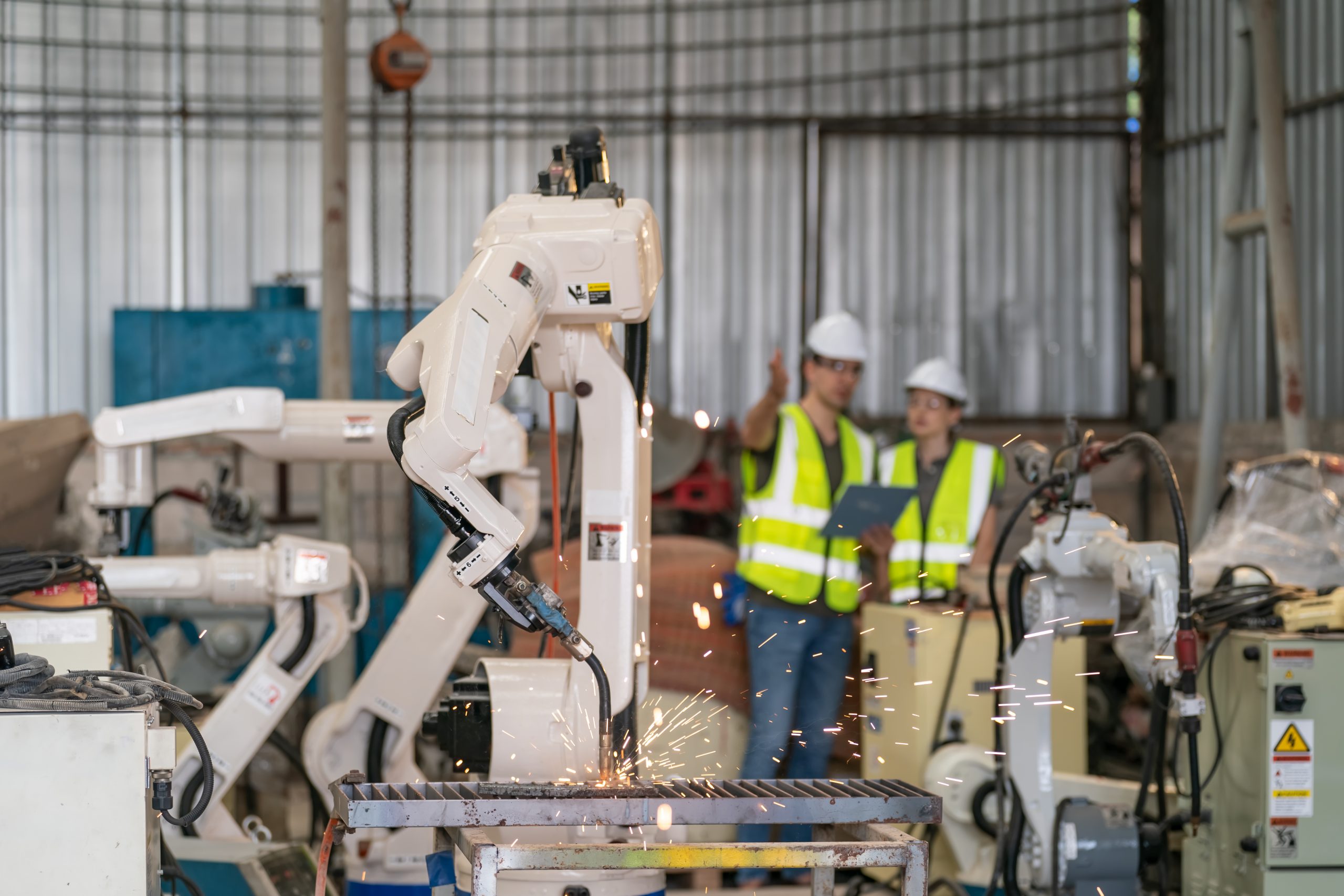The global construction robots market size is estimated to be around £300 million in 2024, and is expected to reach over £600 million by 2029. This is a clear indicator of the potential growth and impact of robotic automation on the construction sector here in the UK.

Why and how is robotic automation used in construction?
A PBC Today article suggests ‘the use of robots in construction tasks has the potential to revolutionise the way buildings and infrastructure are built, improving productivity, efficiency, and safety on job sites’.
There was a shift towards heightened interest in robotic automation in construction after the COVID 19 pandemic when the industry was put on hold and the vulnerability of reliance on human workforces in such a labour intensive industry was highlighted.
In construction, robotic automation is being increasingly used for standard construction tasks such as bricklaying, welding and painting. Robotics can also automate the use of heavy equipment, demolition, transportation and concrete work.
The automation of modular production, including 3D printing of components, is another area of construction that is widely adopting robotic automation.
Increased productivity
Robots don’t suffer from fatigue or lack of motivation which makes them more productive, particularly with repetitive or mundane tasks.
Enhanced precision / fewer mistakes
Robotic automation is programmed to deliver accuracy and precision that leads to higher quality construction, fewer errors and less remedial work.
Worker safety improvements
Robotic automation can take on more dangerous construction tasks which protects worker safety. In creating a more controlled environment, robotic automation allows for closer monitoring of safety on site.
Reduced operating costs
Robots can be productive for longer than humans which results in more work completed in a shorter time. Fewer errors also save time and labour. These efficiencies result in significant cost savings.
Where robotic automation is transforming UK construction projects
As robotic automation adoption increases in the UK, modular construction and infrastructure projects are particularly benefiting.
Modular construction
Companies like Dodd Modular Production Systems are facilitating modular housing through the design of bespoke automation systems. Dodd’s list of advanced robotic applications include timber and steel framing stations, routing, welding, riveting, nailing, boarding stations, brick slip and painting processes.
As reported in Construction Management, the Laing O’Rourke Centre for Construction Engineering and Technology has set out its vision for a construction project in 2030 that features significantly increased automation including fully automated offsite production.
Infrastructure projects
A recent article in Construction Management featured a prototype robot that has been developed to make tunnel infrastructure installation more safe and efficient.
The final system has been designed to be deployed in tunnel construction for various sectors including transport, water and energy. ‘It is expected to increase productivity by 40% due to faster installation, reduce installation costs for new M&E systems by 30%, and cut construction plant movements by 40% (thus reducing embodied carbon)’.

Challenges of robotic automation in construction
The high upfront investment needed for robotic automation can be prohibitive for construction companies. There are also concerns around the integration of automation with existing construction workflows and the collaboration between human workers and robots.
The upskilling of employees will be required for more widespread deployment of the technology, but it may be necessary to overcome the fear of automation to reach that point. Education around the complementary role of robots rather than taking away jobs will be needed for greater acceptance.
The future potential of robotic automation for the built environment
Advances in AI and robotic automation offer new ways to build more sustainably and efficiently, and help construction to become a safer industry.
It is expected that machine learning will be increasingly used to perfect tasks and improve performance, while sensor-based technologies such as cameras and scanners will be used to monitor and analyse construction sites and projects.
Centre for Construction Best Practice (CCBP) Membership
CCBP champions the safest, most cost-effective, and efficient construction processes possible. This involves exploring exciting and transformative design methodologies like robotic automation through our resources, events and member-driven research.
Will you join us? Find out more about CCBP membership and how you can get involved.
References
- Modor Intelligence – Construction Robots Market Size & Share Analysis – Growth Trends & Forecasts (2024 – 2029)
- PBC Today – How will construction robotics change the industry?
- DODD – Robotics
- Construction Management – Cambridge Laing O’Rourke Centre sets out vision for projects in 2030
- Construction Management – Costain to use tunnelling robot
